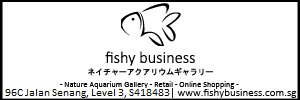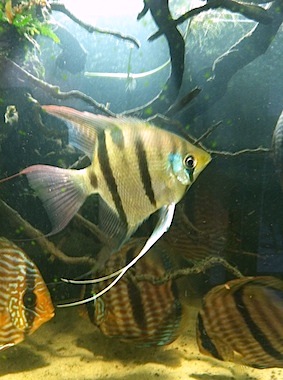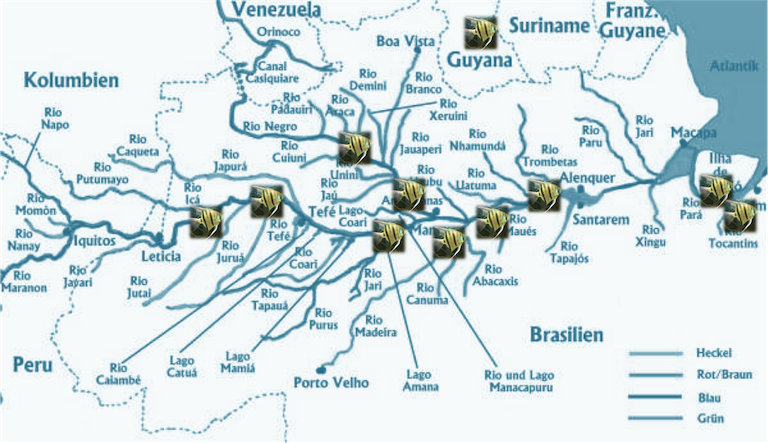If you search Fishbase and other sources, you inevitably come across this blurb: "...is a river dwelling angelfish species that originates from rivers in the Amazon River basin along the Solimões River, Amazon River, and Rupununi River."
That annoyed me for a long while, because at the same time, Heiko Bleher was reporting Leopold angels to be common companions to Heckel discus and Heckel discus aren't found in the Solimões-Amazonas or Rupununi as far as I know. Also the Rupununi is part of the Essequibo drainage in Guyana and pretty far from the main Amazonas.
I finally unearthed an article in German, which I got translated ... below is a map which I modified from a less easy-to-read one from that article, showing locations where the species has been collected.
Clearly the commonly cited distribution of being found in the Amazonas "between Manaus and Santarem" is rather off the mark. The species seems to extend upriver almost into Peruvian waters, and downriver all the way to Belem and even the mouth of the Tocantins. They also branch south down the Abacaxis and north up the Rio Negro (which would explain their co-existence with Heckels). No reports of them in the Branco, but I'd bet they're there too, since they probably reached the Essequibo river system in Guyana by way of the Branco.
With this kind of distribution, they must be fairly adaptable fish as far as water parameters are concerned: the Negro and Abacaxis and the Arapuins near Santarem are blackwater, the main Amazonas is silty and slow, the Tocantins is whitewater, and the Essequibo clearwater.
What they probably don't like is fast current and waters that are too open and exposed. Unlike wild Scalare, which I've also kept and seem to me rather agnostic about their surroundings, leopold angels appear to have a marked preference for driftwood tangles. They also seem to keep territories closer to the substrate bottom, as compared to Scalare who happily roam and bicker over open water.
I've also experienced wild Leopolds freak out in heavily planted tanks by the way... That old wisdom about angelfish living in quiet, heavily planted environments? Well, that don't seem to apply to Leopolds. They dash amidst the water weeds and go into a state of shock, as if they were caught in a net. As an anecdotal measure: I had Leopolds freaking out and even jumping out of the tank almost every other day for ten days after they were introduced into a planted tank, and Leopolds calming down in two days (without acrobatic jumpings) when kept in bare rock/driftwood tanks.











 Reply With Quote
Reply With Quote

 My observations are very much in line with yours. When they were with me, they were extremely docile, even to the extent of being picked on by farmbred Mesonauta sp. Granted, the farmbred Mesonauta sp. these days available locally are exceptionally aggressive (I have wildcaught Mesonauta insignis in another tank, and they are as docile as this group of leopoldis), but even my timid Heckel discus held out against them better than the leopoldis.
My observations are very much in line with yours. When they were with me, they were extremely docile, even to the extent of being picked on by farmbred Mesonauta sp. Granted, the farmbred Mesonauta sp. these days available locally are exceptionally aggressive (I have wildcaught Mesonauta insignis in another tank, and they are as docile as this group of leopoldis), but even my timid Heckel discus held out against them better than the leopoldis.
Bookmarks